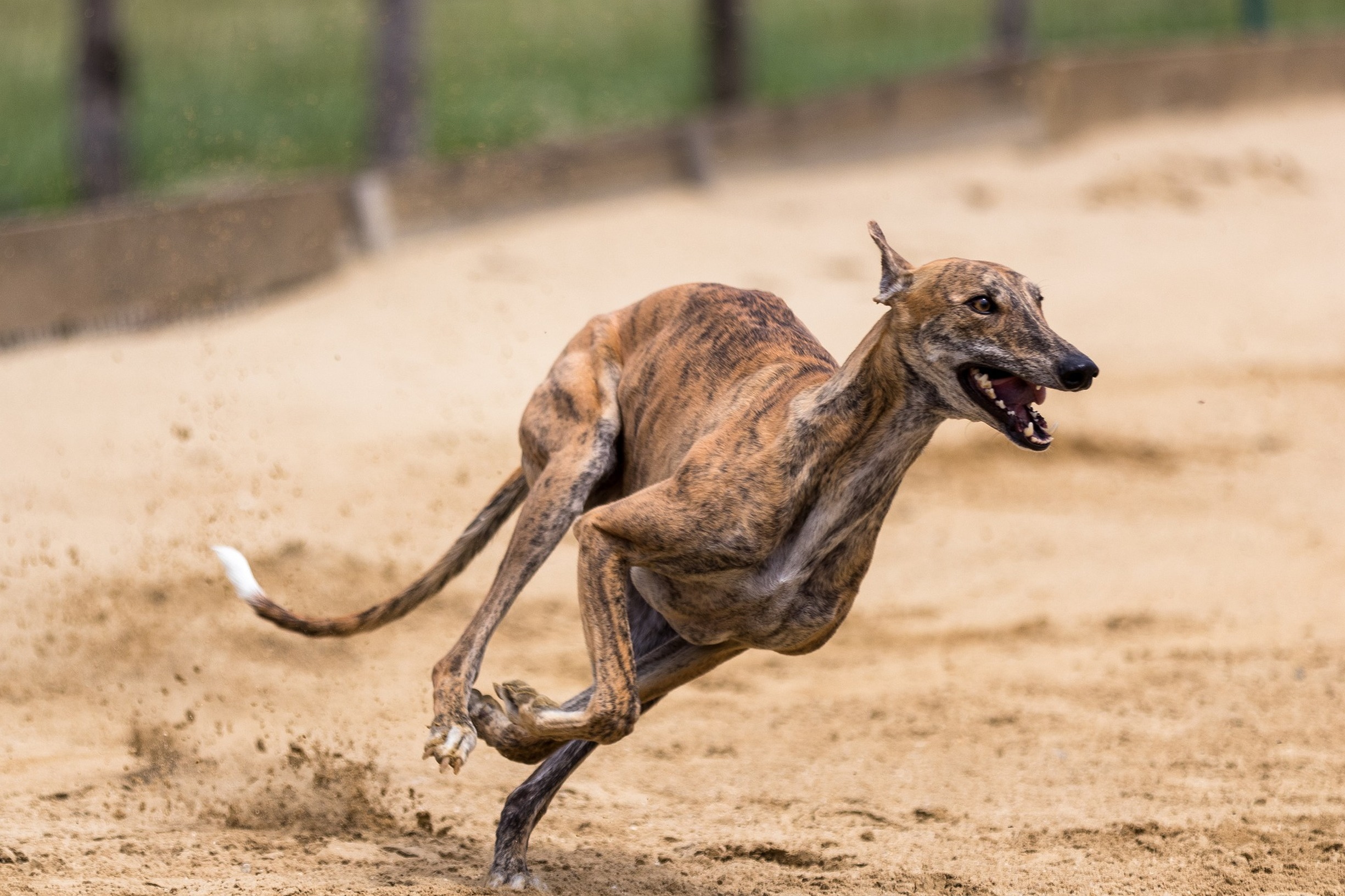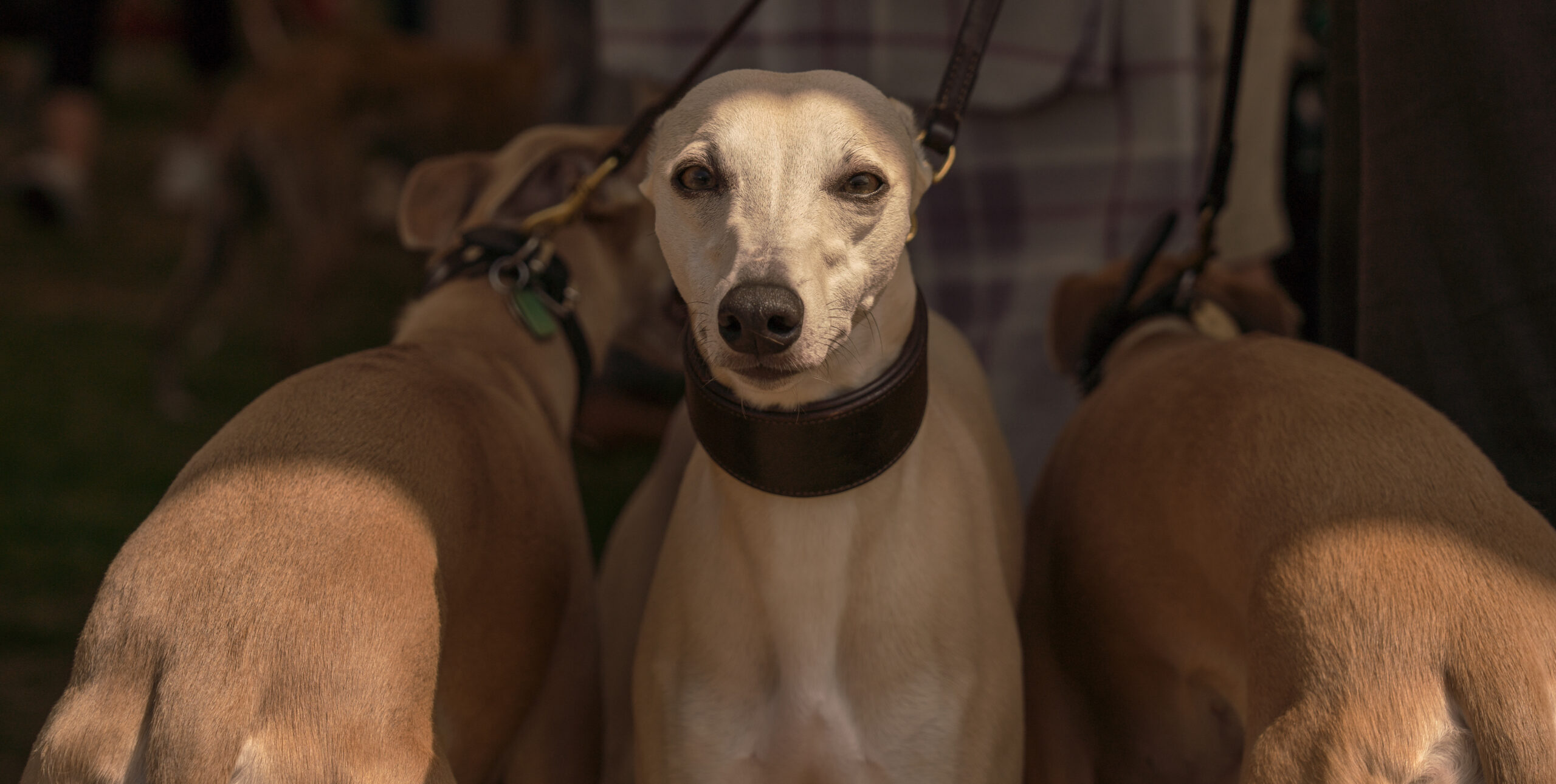
Popular Myth: This is the worst time ever to sell puppies.
We’ve all heard it, and some of us multiple times. And while we’re being very hesitant to call it a myth, we’ve dug up some research, just to help make sense of all the noise.
Greyhound racing is a sport where fast and elegant dogs run around a track, captivating audiences for many years. But, in recent times, the sport has faced criticism because of concerns about how the dogs are treated and whether it’s ethical to use them for entertainment.
Written by: The Dog Journal
Greyhound racing started a long time ago, even in ancient civilizations like Egypt and Persia. But it became more like the sport we know today in the early 1900s in the United States and the United Kingdom. Florida had the first official greyhound racing track, and it quickly spread to other states and countries.
The roots of greyhound racing can be traced back over thousands of years. Ancient civilizations like Egypt, Persia (modern-day Iran), Greece, and Rome all had records and artifacts suggesting that greyhound-like dogs were used for racing and hunting. Egyptian tombs dating back to 2900 BC contained depictions of greyhounds, emphasizing their grace and speed. In Persia, kings and nobles valued these sleek canines for their hunting prowess and held races to showcase their speed. The Greeks and Romans also held dog races as part of religious festivals and sporting events. While the ancient world laid the foundation for greyhound racing, it wasn’t until the early 20th century that the modern sport as we know it began to take shape.
Greyhound racing’s modern era in the United States began in the early 20th century, and the first official greyhound race took place on February 20, 1919, at the Emeryville Speedway in Emeryville, California. This event is historically significant as it marked the beginning of commercial greyhound racing in the country.
The man behind this groundbreaking race was Owen Patrick Smith, a newspaperman and entrepreneur. Smith was known for his promotional skills and his keen interest in dog racing. He envisioned a new form of entertainment that involved greyhounds running at high speeds around a track, much like horse racing but more affordable and accessible to the general public. Smith, along with several partners, established the Emeryville Speedway, which was designed specifically for greyhound racing. The track featured a straight, 1/8-mile (approximately 220 yards) course with sand as the running surface. This provided ideal conditions for the agile and swift greyhounds to showcase their remarkable speed and grace.
On that historic day in February 1919, a crowd of spectators gathered at the Emeryville

On that historic day in February 1919, a crowd of spectators gathered at the Emeryville Speedway to witness the very first professional greyhound race. The event featured several heats, with greyhounds competing against each other to determine the fastest among them. The race generated considerable excitement, and the concept of greyhound racing quickly caught on. Following the success of this inaugural event, greyhound racing began to spread to other states across the country. By the early 1920s, tracks had opened in various locations, such as Florida, Texas, and Massachusetts. The sport’s popularity grew rapidly, attracting both spectators and bettors who enjoyed the thrill of the races.
Around the same time, the sport also gained momentum in the United Kingdom. The first official greyhound race took place at Belle Vue Stadium in Manchester in 1926, attracting large crowds. Soon after, more greyhound tracks opened across the UK, solidifying the sport’s popularity.
One of the most common and prestigious present-day races in the world of greyhound racing is the English Greyhound Derby. The English Greyhound Derby is held annually in the United Kingdom and is considered one of the most significant events in the sport. This event takes place at various locations across the UK, but its most famous and historical venue is the Wimbledon Stadium in London.
Wimbledon Stadium had been the traditional home of the Derby since 1985. However, it’s important to note that in 2017, the stadium closed, and the Derby moved to Towcester for a short period before finding its new home at Nottingham Greyhound Stadium. Nottingham Greyhound Stadium, located in the East Midlands of England, has been hosting the English Greyhound Derby since 2019. The Derby attracts top-class greyhounds from around the world, competing for a substantial prize purse and the prestigious title.

Apart from the English Greyhound Derby, there are numerous other prominent greyhound races held at various tracks across different countries. For example, the Irish Greyhound Derby in Ireland and the Melbourne Cup at Sandown Park in Australia are other prestigious events that draw attention from greyhound racing enthusiasts worldwide.
Most greyhound races are run and regulated by sanctioning bodies to ensure fair competition, adherence to rules, and the welfare of the dogs. These sanctioning bodies are typically responsible for overseeing and governing greyhound racing at various tracks and locations, one of which is the National Greyhound Association (NGA). In the United States, the NGA is a major organization that governs greyhound racing. It registers greyhounds, sets rules for racing, and ensures proper treatment and conditions for racing dogs.
The earnings of top-winning greyhounds can vary significantly based on the prize money offered at different races and competitions. Additionally, factors such as the number of races won, the prestige of the events, and the era in which the greyhound competed can also influence their total earnings.
In the present day, prize money for greyhound racing has increased significantly, especially in prestigious competitions like the English Greyhound Derby and other high-profile events. Top-winning greyhounds in modern times can earn substantial amounts in prize money. It’s not uncommon for winning greyhounds to earn tens of thousands to hundreds of thousands of dollars in prize money over their careers. However, it’s important to note that prize money is just one aspect of a greyhound’s value. Topperforming greyhounds can also command high stud fees if they have a successful racing career and demonstrate desirable breeding qualities.
Famous Kennels and Racers: Perhaps one of the most renowned and iconic racing teams is the “Dodger Kennel” from the United States. The Dodger Kennel was founded by Charles W. Ruggles, a prominent figure in the greyhound racing world. The kennel was based in Abilene, Kansas, and became synonymous with breeding and training champion greyhounds during the mid-20th century. Ruggles was a masterful breeder and trainer, and his expertise resulted in a string of successful greyhounds that dominated the racing tracks of their time.
By far, the most famous greyhound from the Dodger Kennel was “Dodger Hanover,” who achieved incredible success during the 1940s. Dodger Hanover was known for his extraordinary speed and ability to break track records. He became a sensation in the racing world and was widely celebrated for his exceptional talent. The Dodger Kennel’s dominance extended to other greyhounds as well, with numerous champions and record-breakers emerging from their breeding and training program. The kennel’s consistent success and the charisma of Dodger Hanover helped elevate their reputation and made them a household name in the world of greyhound racing.
Another famous dog in his time was Mick the Miller. He was born on June 1, 1926, in Killeigh, County Offaly, Ireland, and he is widely regarded as one of the greatest greyhounds of all time. Mick the Miller’s racing career was nothing short of spectacular, and he achieved many remarkable feats during his time on the track. Some of his most notable achievements include:
Double English Greyhound Derby Winner: Mick the Miller won the English Greyhound Derby, the most prestigious greyhound racing event, twice. He first claimed victory in 1929 and then successfully defended his title the following year in 1930. Winning the Derby once is an impressive accomplishment, but winning it twice consecutively is a testament to Mick’s incredible talent and consistency.
Record-Breaking Performances: Mick the Miller set new standards for speed and performance during his career. He was renowned for his exceptional acceleration and ability to take early leads in races, leaving his competitor…..

trailing behind. His ability to break track records was unmatched, and his times were often the fastest of his era.
Mass Popularity: Mick the Miller’s success and charismatic personality made him a beloved and celebrated figure not only among greyhound racing enthusiasts but also with the general public. He became a household name and a national hero, capturing the hearts of people across the UK and Ireland. In recognition of his tremendous contributions to greyhound racing, a statue of Mick the Miller was erected at Wimbledon Stadium in London, one of the most famous greyhound racing tracks in the UK. The statue serves as a tribute to the remarkable greyhound who left an indelible mark on the sport and will forever be remembered as one of its alltime greats.
Today, greyhound racing is facing a decline due to several reasons. One major factor is the growing concern for the welfare of the racing dogs. Reports of injuries and mistreatment have caused public outcry and negative attitudes towards the sport. Additionally, cultural changes have led to a shift in values, with more people seeking humane and ethical forms of entertainment. The competition for people’s attention from other sports and entertainment options has also impacted the popularity of greyhound racing. Some regions have introduced stricter regulations or closed greyhound tracks in response to public concerns. Economic challenges and online betting alternatives have further contributed to the industry’s struggles. As a result, the future of greyhound racing remains uncertain, and the industry must address these issues to stay relevant and regain public support.

We’ve all heard it, and some of us multiple times. And while we’re being very hesitant to call it a myth, we’ve dug up some research, just to help make sense of all the noise.

BLC became the idea of breeders in the pet breeding community in early 2014. Concerned individuals, groups,

Oh no! you know that smell. Yes “That” smell. Nothing else is quite like it. You open the door, and the odor of parvovirus knocks you a step back. Consider yourself fortunate if you have never had this experience. But if you have, you know you and your pups are in big trouble.